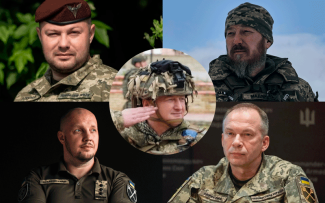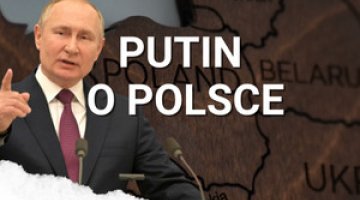Personnel reshuffle at the top of the Ukrainian army. Day 1203 of the war

![]()
Russian forces continue to advance towards Kostiantynivka from three directions. Fighting continues for the last outer belt of defence south-west of the city, based on the villages of Yablunivka and Oleksandro-Kalynove. Russia has also made further advances from the Toretsk side, where defenders are trying to hold the village and railway station of Diliivka, as well as Chasiv Yar – here the main centre of resistance is still Stupochky. However, Russia succeeded in outflanking the enemy in the southern part of Chasiv Yar and proceeded to push them out of this part of the town (the last part controlled by the Ukrainians).
More towns between Pokrovsk and Velyka Novosilka came under Russian control, where Russia approached the border of Dnipropetrovsk Oblast in several places. Earlier, Russia reached it near the village of Horikhove and, according to some sources, Russian sabotage and reconnaissance groups have crossed it. Fighting is underway for the local Komar road junction – the last one controlled by Ukraine in this area of Donetsk Oblast. The Russians have expanded their area of possession west of the Pokrovsk-Konstiantynivka road, east of Siversk, north of Kostiantynivka and north of Kupiansk; however, their advances have not changed the overall situation in these areas. Slight shifts in Russia’s favour also occurred in Zaporizhzhia Oblast.
The Russians are developing successes north of Sumy, to which they have about 17 km remaining from this direction. Fighting is underway for Yunakivka, through which the main road to Sumy runs from the Russian border, previously serving as a logistical hub for the Ukrainian operation in Kursk Oblast. According to some sources, Ukrainian forces continue to attempt attacks on Russian territory in the vicinity of Tyotkino, west of the main area of operations.
![]()
On 6 June, Russia carried out another massive air attack, the main target being industrial facilities. According to Ukrainian sources, they used 407 strike drones or their imitators and 47 missiles in this attack (199 drones and 30–37 missiles are thought to have been shot down, while 169 drones were locationally lost without negative consequences). The worst damage was reported in Kyiv, where enemy missiles hit, among others, machine-building plants, a logistics centre and railway infrastructure (this latter was also damaged in Kyiv Oblast). Five people were killed and 32 injured, with about half – three killed and 16 injured – being emergency workers.
The impact on industrial facilities in Ternopil resulted in toxic substances leaking into the atmosphere. The local authorities urged people to close their windows and stay inside. Among others, the Vatra electrotechnical plant was hit and 11 people were injured. In Lutsk, the infrastructure of the Motor aircraft engine repair plant was damaged. Two people were killed and 30 injured. Hits to industrial facilities were also reported from Chernihiv (power supplies were periodically disrupted in the city), Kremenchuk and Drohobych.
On 7 June, the most powerful attack on Kharkiv since the beginning of full-scale aggression took place, with the Russians using nearly 60 drones, rockets and guided aerial bombs. The main target was plants in Kyivskyi District – at least 40 hits were recorded on their premises. Four production halls were destroyed and the fire was still being extinguished two days later. Three people were killed and 22 wounded. Russia attacked Kharkiv again the same day in the evening; they used guided aerial bombs. Fifteen people were wounded. The industrial areas of the city were also attacked on 4, 5 and – twice – on 6 June. In the attack on 5 June, 19 residents were wounded, including four children.
On 9 June, the Russians again attacked the capital, as well as Rivne, where this was the most powerful strike since the beginning of the war, and also one of the main enemy airbases near Dubno in Rivne Oblast (with F-16 fighters stationed there). On that day, Ukraine registered another record for drone use – stating that Russia launched 479 of them. According to the Ukrainian Air Force Command, most of the missiles used by Russia were shot down, including all four Kinzhal hypersonic missiles. Nevertheless, there was heavy damage in Rivne and extensive fires at Dubno Air Base, as confirmed by NASA FIRMS images. On 10 June, Kyiv was again attacked (there were reports of damage in four areas of the city).
Russia continued its air strikes on the regions in the immediate frontline area. They attacked Pavlohrad (3 June), Odesa (4 and 10 June), Sumy (4 June), Dnipro (6 June) and Zaporizhzhia (8 and 9 June), among others. On 4 June, a Russian ballistic missile hit another Ukrainian army training centre near Poltava. Officially, there were no casualties, but it is known that one instructor was killed and two wounded soldiers died in hospital. According to Ukrainian data, from the evening of 3 June until the morning of 10 June, Russia is thought to have used a record total of 1,654 strike drones and their imitators and 95 missiles. Of these, 862 drones are thought to have been shot down and 585 were to be locationally lost. The defenders also declared 59–68 missiles downed, with two more missing their targets.
![]()
On 6 June, Ukrainian drones again struck the Kombinat Kristall fuel depot in the town of Engels in Saratov Oblast, which supplies, among other things, the local Russian strategic aviation base. Three fuel tanks were hit and were still on fire two days later. Also on 6 June, an unmanned aircraft damaged the roof of the production hall of the Progres plant in Michurinsk, Tambov Oblast. However, no hits were confirmed at Bryansk airfield or at Millerovo airfield in Rostov Oblast, which was attacked one day earlier.
A drone hit on 9 June resulted in a fire at the scientific and experimental relay institute in Cheboksary, which supplies, among other things, antennas for Russian strike drones. On that day, drones also attacked the Savasleyka military airfield in Nizhnovgorod Oblast and Buturlinovka military airfield in Voronezh Oblast. According to the Ukrainian General Staff, “two units of enemy aviation technology” were hit at the former, probably MiG-31 and/or Su-30/Su-34 aircraft, but this information was not confirmed. One day earlier, Ukrainian drones unsuccessfully attacked the Azot chemical plant in Novomoskovsk in the Tula region and, on 10 June, a plant producing strike drones in Yelabuga in Tatarstan.
On 4 June, Ukrainian military intelligence (HUR) revealed that a successful cyberattack had been carried out – the IT systems of Russia’s Tupolev design office, a key company involved in the design and development of the Russian Federation’s strategic aviation, were hacked. The attack succeeded in gaining access to a wide range of information: internal official correspondence, employee personal data, home addresses, engineers’ CVs, orders and the minutes of closed management meetings. Intelligence monitored the flow of documents within the company for a period of time, which made it possible to identify those directly involved in the operation of strategic aviation.
![]()
On 5 June, the Security Service of Ukraine (SBU) warned that hostile special services were using new operational tactics in their operations. Officers of the Federal Security Service of the Russian Federation are increasingly impersonating SBU officers and thus trying to recruit Ukrainians for sabotage activities. They contact potential agents via social media and instant messaging and then commission them to carry out ‘tasks’ in the interests of the state. In reality, this involves criminal activities ranging from the surveillance of specific individuals to acts of sabotage, such as setting fire to military vehicles or administrative buildings. Another new method of recruitment involves sending out false summonses for interrogation based on fabricated allegations – such as the purchase of ‘prohibited goods’. The victim is then offered a deal over the phone in exchange for following instructions. The SBU also warns that the Russian services are trying to get citizens to install malware on their phones to enable full surveillance. So far, teenagers have been the main target of recruitment, but efforts are now extending to the elderly.
![]()
On 4 June, at the 28th meeting of the Contact Group of States Supporting Ukraine militarily in the Ramstein format, participants reaffirmed their previous commitments; some of them also revealed new delivery details. By the end of the current financial year (i.e. April 2026), the UK will have delivered 100,000 drones worth a total of £350m – another part of a £4.5bn support package. The UK Defence Secretary, John Healey, also announced the allocation of £247m this year for training Ukrainian military personnel. The Netherlands will support the development of Ukraine’s naval defence capabilities with supplies worth €400 million. According to Defence Minister Ruben Brekelmans, the package will include more than 100 light vessels and 50 naval drones, equipment and spare parts and training. The head of Germany’s defence ministry, Boris Pistorius, announced that the first German-funded so-called ‘long-range’ drones could be received by the Ukrainian army in a few weeks.
In a summary of the meeting, Ukrainian Defence Minister Rustem Umerov further reported on pledges from Belgium (annual support of €1 billion until 2029, delivery of a mine countermeasures vessel), Canada ($45 million for drones, radio-electronic warfare systems and continued deliveries of Coyote and Bison armoured cars), Norway ($700 million for drones with an indication of subsidising their production in Ukraine) and Sweden (€440 million for joint purchases within the multinational coalition, mainly artillery munitions and drones). The event was not attended by the US Secretary of Defence for the first time (the previous Ramstein format meeting was attended online by Pete Hegseth).
Canada will provide Kyiv with $440 million worth of additional military aid, as announced by the country’s Defence Minister Bill Blair on 9 June. Of this, $200m is to be spent on the purchase of artillery munitions under the Czech initiative and $100m is to be invested in drone production in Ukraine under the so-called Danish model. The remaining funds will be used to acquire various types of equipment produced in Canadian. Two days earlier, Canada’s Ministry of Defence announced that in the new support package announced at the contact group meeting, $21.9 million would be spent on armoured vehicles and equipment and ammunition, and $3.6 million on radio-electronic warfare assets, all Canadian-made.
NATO countries will provide Ukraine with additional military support worth €20 billion. Secretary General Mark Rutte announced that this decision was taken at a meeting of NATO defence ministers in Brussels on 6 June. He did not reveal what the amount would be used for or over what period.
Patriot systems that Israel used in the early 1990s (their number is not known, probably one or two) were delivered to Ukraine. This was announced on 9 June by the Israeli ambassador in Kyiv, Michael Brodsky. In an interview he gave, he stressed several times that it is untrue that Israel does not support Kyiv militarily. A day later, the Israeli Foreign Ministry denied the diplomat's reports that the country had handed over the Patriots to Kyiv.
![]()
On 3 June, there were significant personnel changes in the top command of the Ukrainian Armed Forces (AFU). General Mykhailo Drapatyi became commander of the Combined Forces of the AFU, making him responsible for all operational activities of the army. His successor as head of the Land Forces has not been appointed – this is expected to happen soon. It is also unclear whether Drapatyi has retained his line post – commander of the operational-strategic group ‘Khortytsia’, directly responsible for the defence of Donbas.
General Oleh Apostol became commander of the Landing and Assault Forces, and his predecessor General Ihor Skybiuk was appointed deputy chief of the General Staff. Robert Brovdi, alias Madyar, was made commander of the Unmanned Systems Force. He replaced Colonel Vadym Sukharevskyi, who has returned to the front as deputy commander of Operational Group ‘East’.
Drapatyi’s appointment to the top operational post should be seen as substantive and offering hope of improving the command organisation of the groupings directly repelling the Russian aggression. As the head of the Land Forces, whose powers are mainly administrative in nature, he could not make proper use of his skills. The appointment of Apostol has to be assessed differently – it is seen as part of the building up of the personnel background of the AFU Commander-in-Chief General Oleksandr Syrskyi. Madyar’s appointment is meant to please the public (he organised one of the most famous and popular drone units – the ‘Madyar Birds’ – and commanded it), and perhaps also to partially alleviate the dissatisfaction of tactical-level frontline commanders. Brovdi has no military background (in civilian life, as a private entrepreneur, he was a grain trader) and his experience at the tactical level cannot be directly translated into army-wide administrative and organisational activities.
On 6 June, the BBC Ukraine portal published material indicating that the Ukrainian army is facing a shortage of FPV drones, which negatively affects its combat capability and effectiveness in repelling enemy attacks. The commander of the 3rd Independent Assault Brigade, Andriy Biletskyi, revealed that his unit had not received a single FPV drone as part of state supplies for three months. Although the brigade was allocated the necessary resources following his statement, the lack of smooth drone deliveries remains a systemic challenge. Captain Yuri Fedorenko – commander of the 429th autonomous unmanned aerial vehicle regiment – stressed that currently only a third of the drones are delivered to the army through centralised supplies. The rest are financed directly by units or donated by the public. The drone battalion commander of the 58th Motorised Brigade, Serhiy Varakin, added that his unit used up to 100 FPV drones per day last year, but now only receives 200–300 per month, which does not even cover the minimum demand. According to BBC journalists, the uneven distribution of the drones and the decline in their quality is also drawing attention. Soldiers have to upgrade the equipment themselves, and the high level of unreliability, especially of fibre optic drones, poses a serious risk on the frontline.
On 10 June, President Volodymyr Zelensky announced that Ukraine is currently able to mobilise around 27,000 people per month, compared to the Russian Federation’s capacity to call up 40,000–50,000 people per month.
![]()
On 5 June, during a meeting in Pyongyang with Russian Security Council Secretary Sergei Shoigu, North Korean leader Kim Jong Un pledged that his country would continue to support Russia in its war against Ukraine and abide by its commitments under the Strategic Cooperation Treaty concluded in June 2024. This provides for mutual assistance in the event of an armed attack on either country. Among other issues raised during the talks was the participation of North Korean soldiers in the fighting in Kursk Oblast (according to HUR, some 11,000 North Korean servicemen are still there). On 10 June, HUR chief Kyrylo Budanov announced that Russia had reached an agreement to start production of Shahed-136-type strike drones on North Korean territory. He noted that the implementation of this initiative could strongly affect the military balance on the Korean Peninsula. He added that North Korea has delivered a wide range of armaments to the Russian Federation: from 122 mm D-74 and 107 mm howitzers and 107 mm and 240 mm calibre multi-barrel rocket launchers to 170 mm M-1989 Koksan self-propelled artillery systems. Russia has also improved the performance of North Korea’s KN-23 ballistic missiles, which now feature high-precision strikes. Their first batch sent to the Russian Federation was of very low quality. According to Ukrainian intelligence, almost half of them deviated from their designated trajectory or exploded in mid-air.
On 5 June, Ukraine’s Foreign Intelligence Service reported that Russia is stepping up production of drones and plans to produce around 2 million FPV drones, 30,000 long-range drones and 30,000 decoy drones designed to reduce the effectiveness of enemy air defences by the end of 2025. Russian companies are expected to catch up with Ukraine in drone manufacturing, taking advantage of their greater financial resources, distributed production lines located far from the frontline and close cooperation with China. Beijing’s support includes the supply of electronic and optical components, navigation and telemetry systems, engines, microprocessors and communication systems for tactical and long-range drones. Intelligence highlights that the enemy is also increasing the use of drones equipped with fibre-optic communications that are resistant to electronic countermeasures.






